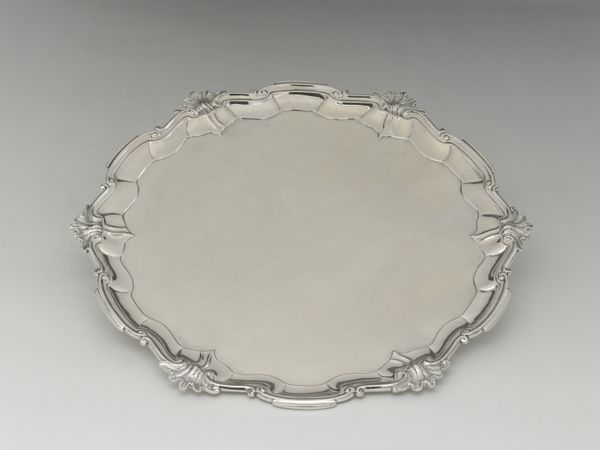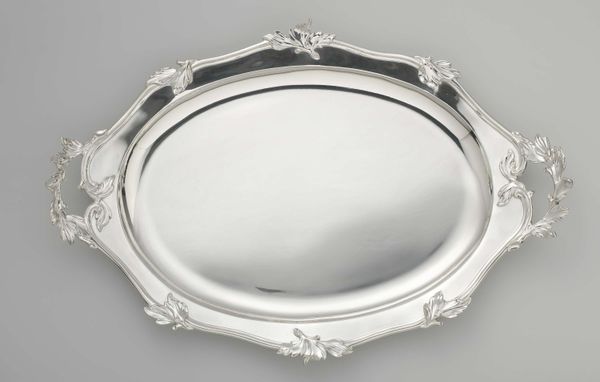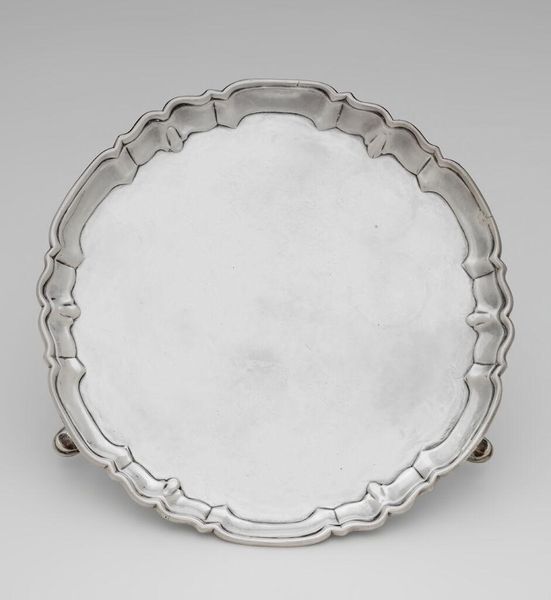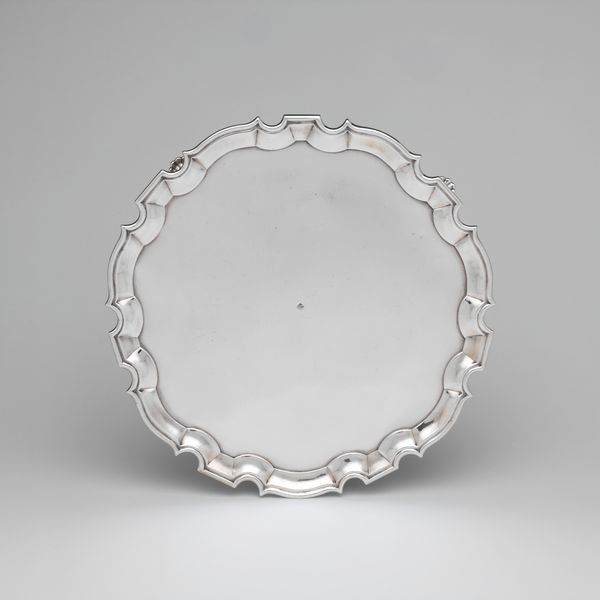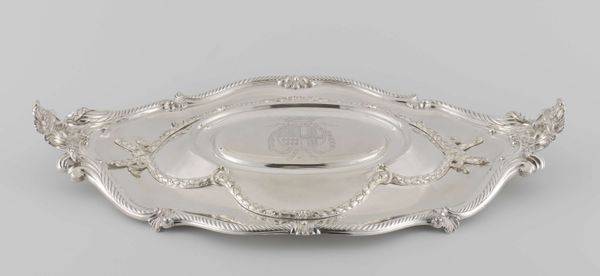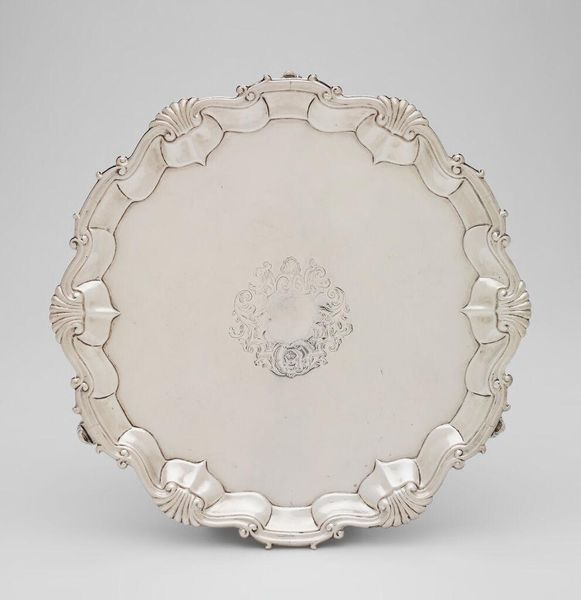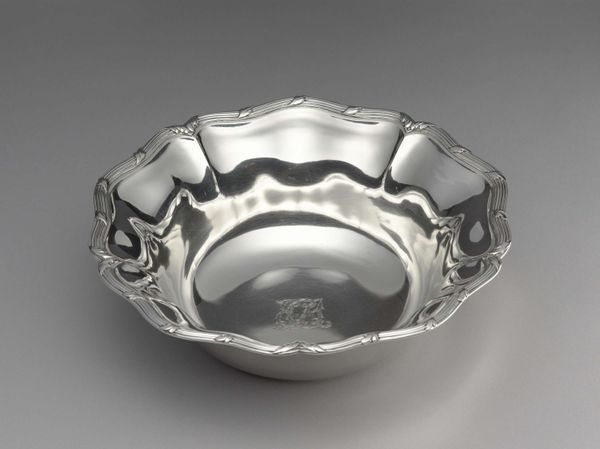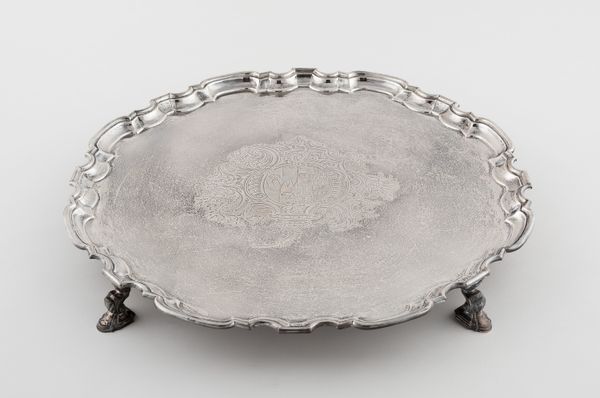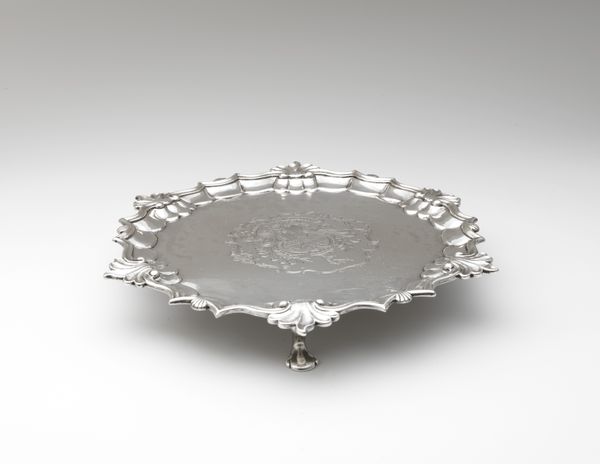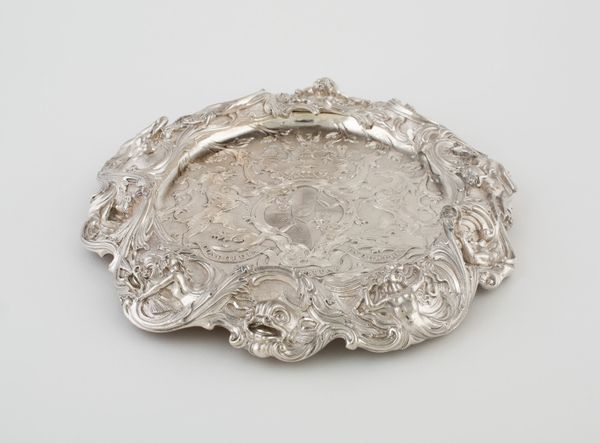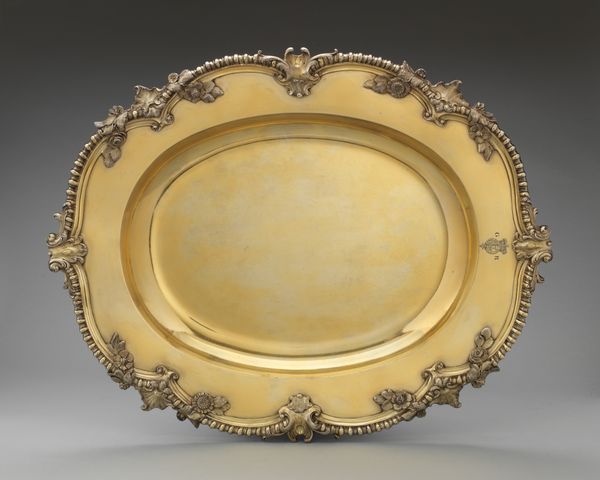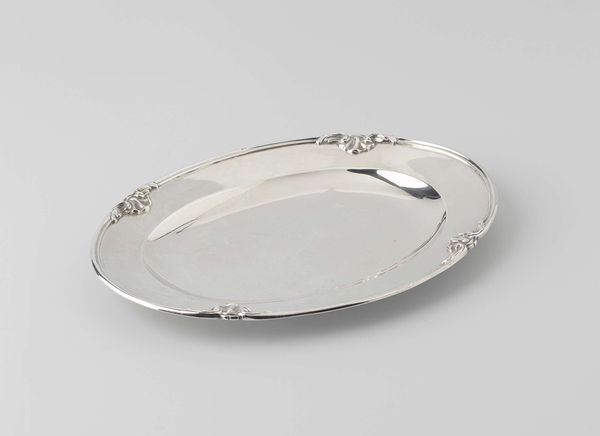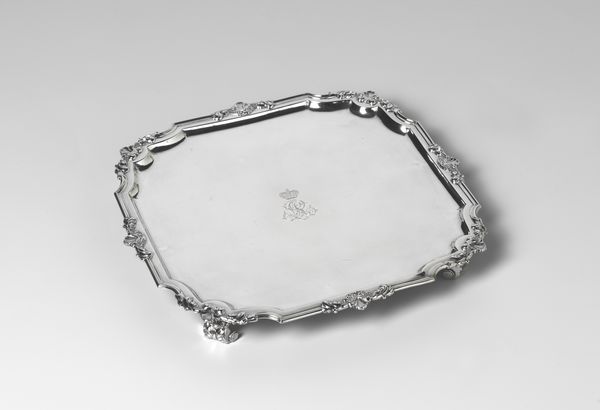
silver, metal
#
silver
#
baroque
#
metal
#
vessel
#
decorative-art
Dimensions: 4.2 × 33.7 × 31 cm (1 5/8 × 13 3/8 × 12 3/8 in.); 963.7 g
Copyright: Public Domain
Curator: This Baroque silver salver, created between 1748 and 1753, exemplifies the elegance of functional objects. Note its intricate shell motifs and gently curving form. Editor: The sheen is quite striking. It's as though the surface itself holds a captured light. One thinks of displays of wealth and formal meals. Curator: Precisely! Silverware of this period played a crucial role in expressing social status, particularly in bourgeois circles. Ownership signified access to resources and global trade networks. I’d want to research how such pieces could enforce hierarchies surrounding dinner celebrations or even religious sacraments. Editor: Absolutely, and we can delve into the silversmithing process, examining the labor involved. Hammering, shaping, polishing—each step speaks to a skilled artisan, who unfortunately often remains anonymous. There’s also a colonial context that must be considered. How did access to the silver itself shape social realities through mining? Curator: A vital consideration. These objects, while beautiful, often carry complex narratives of resource extraction and labor exploitation, particularly when considering international trade and imperial expansion. We also need to evaluate whether, and how, domestic roles for women could evolve due to the social functions assigned to serving tools and utensils such as this salver. Editor: Exactly, and it's not simply about economics. The materiality is crucial; silver is heavy, precious, and it tarnishes. The constant polishing underscores domestic labor's repetitive nature. Curator: Viewing the Salver now, I’m drawn to think about the domestic and class tensions imbued within such crafted serving wares, now repurposed as display pieces in a museum, outside their initial environment. Editor: Indeed, by considering the broader scope of the materials and processes used in producing such objects, a rich conversation opens around issues related to making, display and social relations, long prior to any notions of “art.”
Comments
No comments
Be the first to comment and join the conversation on the ultimate creative platform.
